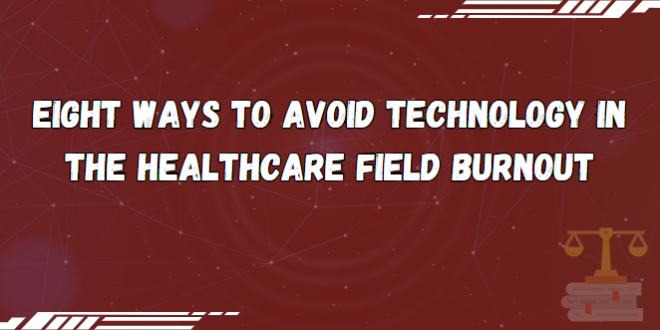
The healthcare field has witnessed significant advancements in technology, revolutionizing patient care and streamlining processes. However, the increased reliance on technology can also lead to burnout among healthcare professionals. In this article, we will explore eight effective strategies to avoid technology-related burnout in the healthcare field. Discover practical tips to maintain a healthy work-life balance and enhance well-being.
1. Set Clear Boundaries
One way to prevent technology burnout is by setting clear boundaries between work and personal life. Establish specific times for technology use and designate periods of uninterrupted rest and relaxation. Avoid checking emails or engaging with work-related tasks during personal time to recharge and rejuvenate.
2. Practice Mindfulness
Mindfulness techniques can help healthcare professionals stay present and reduce stress associated with technology overload. Incorporate mindfulness practices, such as deep breathing exercises or meditation, into your daily routine. These practices can promote relaxation and improve focus, allowing you to navigate technology with a calm and centered mindset.
3. Take Regular Breaks
Regular breaks throughout the workday are crucial for preventing burnout. Step away from screens and engage in activities that promote relaxation and rejuvenation. Take short walks, stretch, or engage in brief conversations with colleagues to refresh your mind and alleviate the strain of constant technology use.
4. Delegate and Collaborate
Delegate tasks and collaborate with colleagues to share the workload. Effective teamwork and collaboration can help distribute the technology-related responsibilities, reducing individual burden and preventing burnout. Foster a supportive work environment where colleagues can rely on each other for assistance and share the challenges associated with technology use.
5. Prioritize Self-Care
Self-care is vital to maintaining well-being and preventing burnout. Engage in activities that promote physical and mental health outside of work. Exercise regularly, eat nutritious meals, get enough sleep, and engage in hobbies or activities that bring joy and relaxation. Prioritizing self-care helps replenish energy and resilience, making it easier to cope with technology-related stressors.
6. Practice Effective Time Management
Developing effective time management skills can alleviate the pressure of technology-related tasks. Prioritize tasks based on importance and urgency, and create a schedule that allows for dedicated technology-free periods. By managing time efficiently, healthcare professionals can strike a balance between technology use and other aspects of their work and personal lives.
7. Seek Emotional Support
It’s essential to seek emotional support when experiencing technology-related burnout. Connect with trusted colleagues, mentors, or support groups to share your experiences, challenges, and frustrations. Engaging in open conversations about the impact of technology on well-being can provide valuable insights and coping strategies.
8. Continuous Learning and Adaptation
Technology in the healthcare field is constantly evolving. Healthcare professionals can prevent burnout by actively engaging in continuous learning and adaptation. Stay updated on new technologies and advancements, attend relevant workshops or conferences, and seek training opportunities. By staying informed and adaptable, healthcare professionals can navigate technology more effectively and reduce the risk of burnout.
Conclusion
Avoiding technology-related burnout in the healthcare field is crucial for maintaining well-being and delivering quality patient care. By setting boundaries, practicing mindfulness, taking breaks, delegating tasks, prioritizing self-care, managing time effectively, seeking support, and embracing continuous learning, healthcare professionals can mitigate the negative impact of technology on their well-being. Implement these strategies to foster a healthier relationship with technology and prevent burnout.
 Spacetimes A collection of the latest news and information from various trusted sources
Spacetimes A collection of the latest news and information from various trusted sources
